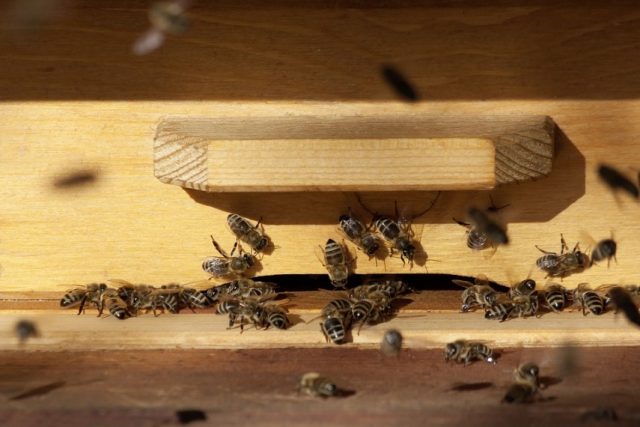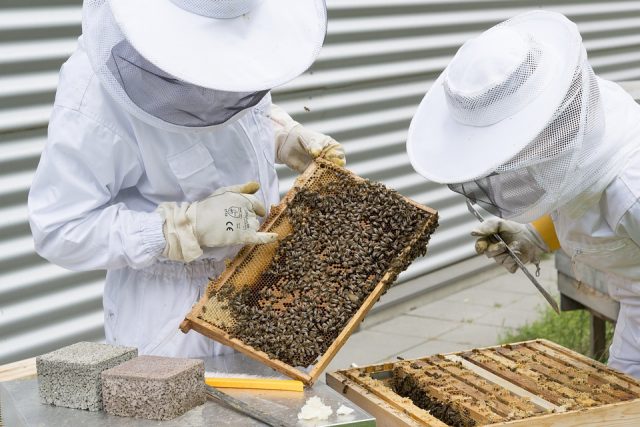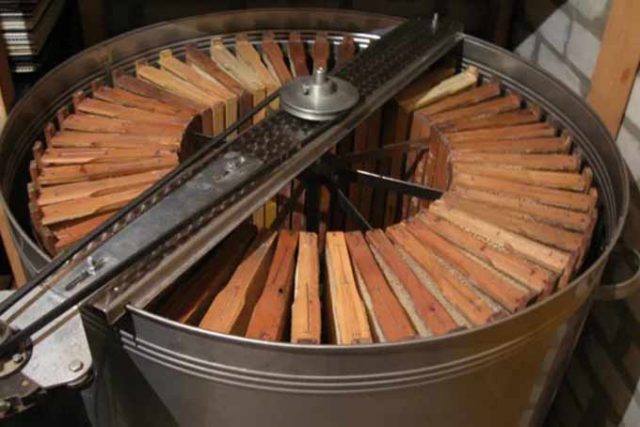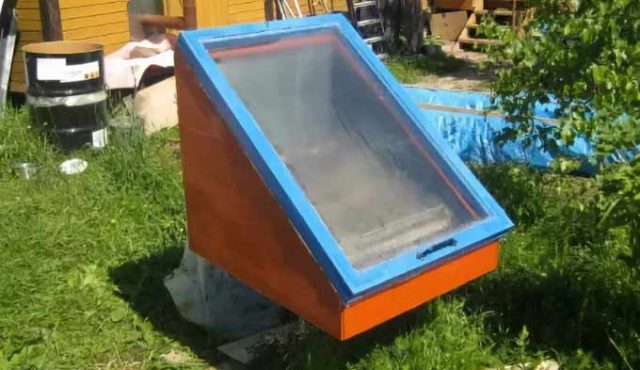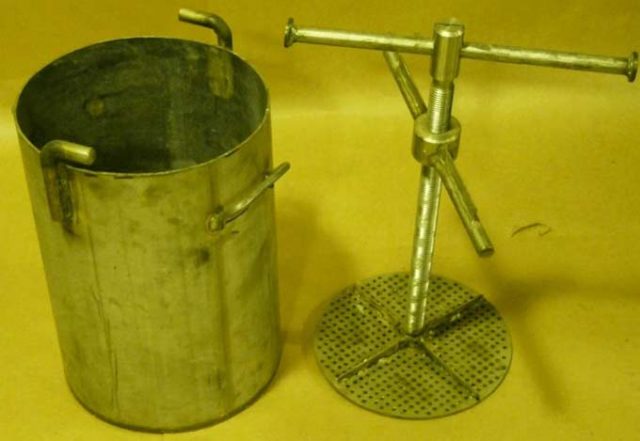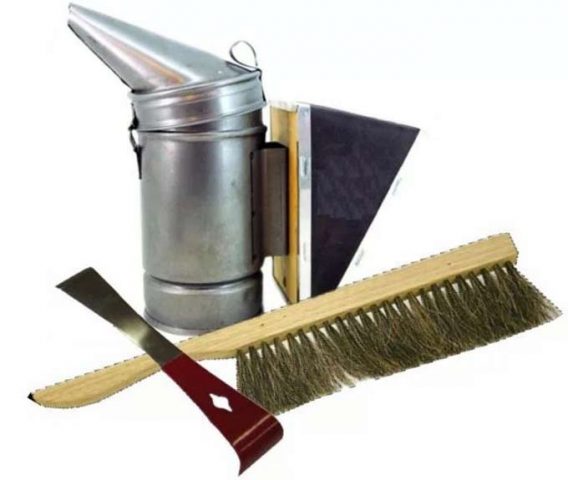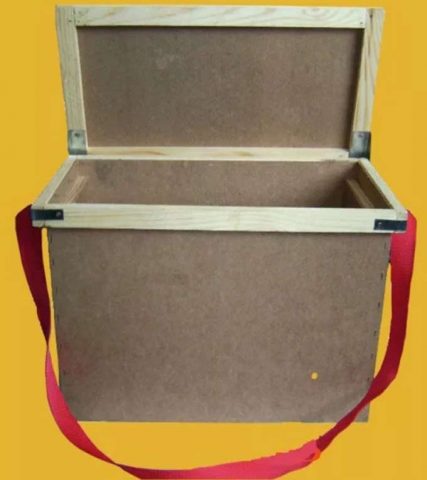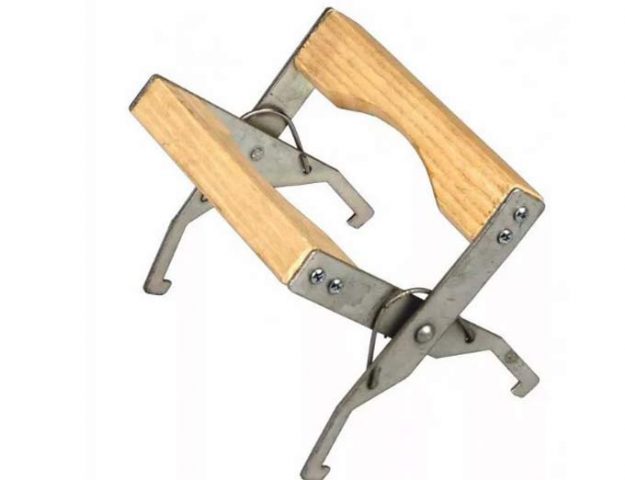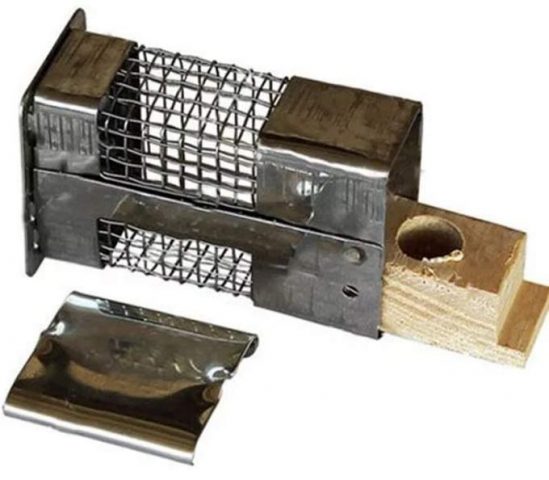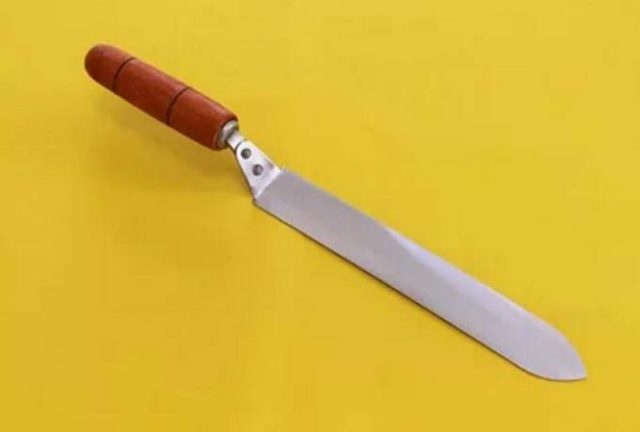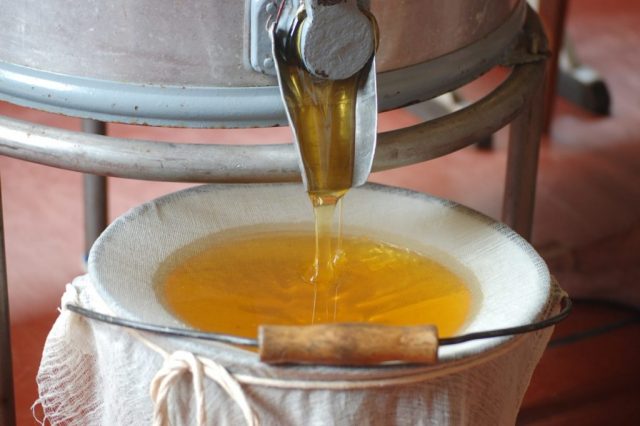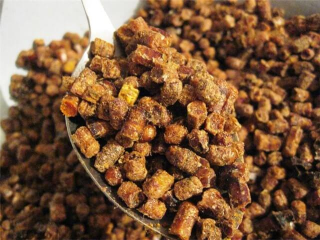Content
A beekeeper's inventory is a working tool, without which it is impossible to maintain an apiary, take care of bees. There is a mandatory list, as well as a list of equipment for novice beekeepers and professionals.
A must-have beekeeping inventory list
Before starting to review the list, you need to understand what is meant by the concept of inventory and equipment. The first group includes home-made and factory devices. Inventory includes chisels, scrapers and other tools that help to care for frames and hives. The equipment is an oversized device of professional and non-professional type for pumping and packing honey, burning foundation, and performing other tasks.
The following is a list that includes accessories that help the beekeeper work in the apiary, receive a good honey bribe:
- Smoker is a must-have for the beekeeper. The device is used to fumigate bees while inspecting the hives.
- Bee remover used to clean the honey compartment from bees. The most popular is the Quebec bee remover, which works on the principle of a valve. The device is used to block the path of the bees inside the hive. Insects penetrate into its lower part and cannot return to the upper body. They put the bee remover in the evening, and in the morning the honey compartment is already clean of bees and ready for service.
- Thermal camera for bees is made in the form of a box with ventilation and heating. A frame with sick insects is inserted inside. After turning on the heating, the temperature rises to + 48 aboutC. The parasites fall off the bees, as they cannot stay between the abdominal rings.
- Pollen collector or pollen trap the beekeeper installs on the entrance Bees crawl through large holes, and the pollen collected by them falls into the lower compartment of the device.
- Beekeeping wire is a required inventory. It is pulled over the frames to fix the foundation. The wire for frames is sold in large and small spools, but all of it is the same thickness of 0.5 mm and is made of mild steel.
- Beekeeper's chisel is a tool. It is used by the beekeeper for moving the frames, separating the bodies, closing the tap-holes and other works. A universal apiary chisel is in demand, but in stock you need to have several tools of different sizes.
- Frame assembly jig in demand in a large apiary. Basically, the inventory is a wooden or metal template in the shape of a box without a lid or bottom. Rails are inserted inside the jig, from which, after fastening, frames of a standard size are obtained.
- Universal beekeeper's box made of 5 mm plywood. On the body there are ventilation slots, a taphole with a latch, a transport handle, an arrival bar, an opening cover. The inventory is used to carry frames, nucleus, swarm for bees.
- Apiary scales help weigh bribes. It is optimal to have a scale for the hive, designed to weigh a load of up to 200 kg.
- Bee analyzer helps to timely determine the beginning of swarming. The electronic device responds to sound frequencies. Inside a calm hive, they oscillate in the range of 100-600 Hz. With the onset of swarming, the frequency ranges from 200 to 280 Hz. The analyzer alerts the beekeeper about a problem.
- Manipulator in demand in a large nomadic apiary. The equipment is used during the loading and unloading of the hives. Apiary manipulator "Medunitsa" is popular among beekeepers, but there are other models as well.
- Electrodetector helps the beekeeper to speed up the process of installing foundation into the frame, to improve its quality.
- Hive pillows in demand at the end of the season. The inventory is used for insulation before wintering.
- Hive clamps help with the transportation of a nomadic apiary. The beekeeper fixes the houses with a tape or metal device, preventing the separation, shift of the bodies.
- Wire tensioner for frames helps the beekeeper to pull the string with equal force. Manually, the wire can not be reached, which threatens to sag. If the string is pulled, it will burst.
- Canvases play the role of a ceiling inside the hive. They cover the frames. Natural cotton fabrics, burlap, linen fabrics, products made of polyethylene and polypropylene are used as materials for the beehive.
- Queen Bee Isolator sometimes mesh, with a lattice, cellular. The inventory is used for temporary isolation of the uterus, replanting into another family. Uterus caps made of stainless steel isolate the uterus on the honeycomb.
- Honey comb press is a sophisticated piece of equipment. It consists of a basket, pallet, clamping screw, drain pipe. All elements are located on a bed with support legs. Beekeepers use a press to cold press honey from combs or lids.
- Scraper blade - the simplest tool. The beekeeper uses it when cleaning the hives.
- Portable box also called ramkonos. A box with a hinged lid and long strap handles usually holds 6-8 frames.
- Hive is the house where the bees live. Traditionally, beekeepers make it from wood, but there are modern polystyrene and polyurethane foam models. The size and design of the hive depends on the number of living bee colonies.
- Trough - compulsory beekeeper inventory. It is used to distribute food and medicines to bees.
- Drinker - equipment similar to the feeder. Beekeepers often make their own from cans and plastic bottles.
- Framework are a kind of honeycomb frame. They consist of slats. A wire is pulled over the frames, the foundation is fixed.
This is not all the accessories for the apiary, but only the essentials. However, the list of mandatory inventory and equipment is not limited to this.
Equipment for beginner beekeepers
A novice beekeeper should always have in his farm:
- mini cage for catching the uterus;
- a box that helps to catch a swarm that flew out of the nest;
- warming pillows for bees made of straw or reeds to warm the hive;
- clips in the form of slats or clamps, which help to fix the beekeeper hives during transportation;
- portable box for tools and small inventory.
A novice beekeeper needs a simple woodworking tool to help make or repair frames, individual parts of the hive.
Apiary equipment used by professionals
Professional tools and equipment for beekeeping simplify the maintenance of hives in a large apiary. The list includes:
- electrical equipment for unsealing combs, drying pollen, pumping out and packing honey, heating wax;
- drilling and woodworking machines;
- Libra;
- equipment used by the beekeeper during the treatment of bees;
- machines and tables for processing beekeeping products;
- tents made of thick tarpaulin, allowing to pump out honey in the apiary;
- transport trolleys for transporting heavy equipment.
To the listed accessories it is necessary to attribute a canopy for bees, which differs from the usual design by the presence of walls. It is the canopy that protects the hives from the wind, the scorching sun, precipitation, and serves as a wintering place for the apiary.
Beekeeping equipment
The main equipment of the beekeeper is a honey extractor. It can be manual or powered by an electric motor. Honey extractors come in different sizes, designed to hold a certain number of frames, for example, 6 or 12 pieces.
Wax refineries help to heat the used honeycomb, cut beading. The equipment is heated by electricity, steam, and the sun.
Voskopress helps to squeeze the merva to dryness. Lever-screw and hydraulic models are popular among beekeepers.
If the beekeeper is collecting pollen, he will need a drying chamber. The equipment is equipped with a fan and a thermostat. A punch will be a good helper. The machine is fixed on the table, holes are pierced in the frame elements.
Beekeeping tools
Conventionally, beekeeping equipment is divided into categories according to its purpose. This also includes the tool used by the beekeeper during the maintenance of the hives.
When examining the hives, use the following tools and equipment:
- The chisel has a straight and curved sting. One end of the tool is used to clean the hives, and the other end to pry the frame.
- A brush with natural bristles is used for spring cleaning of hives. The soft bristles of the tool sweep the bees from the frames.
- The smoker consists of a container for loading fuel and a nozzle that releases smoke. Fanning the heat with furs. Electric models have a fan.
- A steel shovel, a poker is considered a tool for cleaning the bottom of the hive, extracting pomor.
- A universal type portable box holds up to 10 frames, but usually they are made for 6-8 pieces. Inventory, tools, top dressing are carried by the box.
- With a metal grip with wooden handles, the frames are removed from the hives. The instrument works like a forceps.
- The hanger is fixed to the outside of the hive. The inspected frames are hung on the holder.
- A blowtorch or canned gas torch is considered a disinfectant tool. The walls of wooden hives are burned with fire.
- A canvas is an obligatory beekeeping equipment used when covering frames.
- The following tools and equipment are used when working with queens:
- The cap is used when placing the uterus in a hive with tinder fungus. The fixture consists of a tin rim with a fixed stainless mesh.
- Titov's cage with a wooden block is used for catching queens. The sealed mother liquor is suspended from the existing upper opening.
- A dividing metal grid separates the nests when limiting oviposition or removing the uterus. The standard size of the fixture is 448x250 mm.
During the maintenance of the frames by the beekeeper, the following tool is in demand:
- A mold is a wooden instrument in the form of a stand. It is used when fixing foundation on a wire.
- A hole punch is a machine in the form of an awl. A tool is used to pierce the frames while pulling the wire.
- With a roller with a toothed disc, the foundation is rolled onto the frame bar. The spur of the tool is used to solder the wire into the honeycomb.
- Using round nose pliers, insert the wire into the holes in the frame made by a hole punch. Further string tension is carried out with a tensioner.
When it comes to pumping honey, the beekeeper will need the following tools and equipment:
- Sieve with mesh size 1-3 mm.Depending on the model, the inventory is hung from the drain valve of the honey extractor or placed on a can, where honey is poured.
- A regular beekeeper knife is a classic tool. To unseal the honeycomb, several knives are heated in hot water, using them in turn.
- A steam knife is considered productive. The blade is heated by steam from a steam generator. There are electrical models where the blade heats up when connected to a mains power supply or current transformer.
There are many other tools available for unsealing combs: forks, piercing and cutting rollers.
Electronic equipment for apiary
Professional beekeepers use electronic equipment in large apiaries. To determine the flight activity of bees, an automatic movement counter was created, equipped with an infrared receiver and emitter. The device for small cores is soldered independently according to the diagram shown in Figure 1.
Figure 2 shows a diagram of another electronic device - a radio microphone. It helps to control the state of the bee colony all year round. Listening to acoustic signals is carried out at a frequency of 66-74 MHz. The adjustment is carried out with a trimmer capacitor.
Electrical beekeeper equipment
Electrically powered equipment speeds up the processing of beekeeping products. This category includes a honey extractor, an electric beekeeper's knife, a pollen dryer, and a heat chamber. Electric tables for honeycomb printing have been created. The owner of a large apiary to speed up the waxing of foundation is helped by an elektronavashchivatel.
Inventory and equipment required for the collection, processing and storage of honey
To get honey brought by bees, to process products, they use a standard set of beekeeper's tools and equipment. The zabrus is cut with an apiary knife. The choice of a classic, steam or electric tool depends on the preference of the beekeeper. It is more convenient to work on the printing table.
Honey from the frames is pumped out with a honey extractor. Filtration is carried out with a strainer. Store the product in cans or other containers. The beeswax and broken honeycomb are remelted with a wax melter.
Conclusion
The beekeeper's inventory is being improved every year. New tools and devices appear. Many inventions are created by the beekeepers themselves. The beekeeper chooses each apiary accessory himself, guided by the complexity and specifics of the work.
